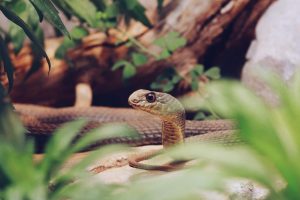Wood-damaging organisms pose a significant threat to the structural integrity and longevity of buildings. Conducting thorough inspections to identify and assess the presence of these organisms is crucial in ensuring the safety and maintenance of homes. This scientific summary provides an overview of the most common wood-damaging organisms encountered during home inspections, including termites, wood-boring beetles, and decay fungi. It highlights their characteristics, signs of infestation, and potential damage they can cause. The information presented here aims to enhance the knowledge and expertise of interNACHI home inspectors in detecting and mitigating the risks associated with wood-damaging organisms.
- Wood is a widely used building material, but it is susceptible to attack by various organisms. These organisms can compromise the structural integrity of wood and potentially lead to costly repairs if left unaddressed. interNACHI certified home inspectors play a crucial role in identifying and assessing the presence of wood-damaging organisms during inspections, enabling homeowners to take appropriate measures for mitigation and prevention.
- Termites: Termites are social insects that feed on cellulose-containing materials, primarily wood. They can cause extensive damage due to their ability to form large colonies. Signs of termite infestation include mud tubes, discarded wings, and hollowed-out wood. Home inspectors should be aware of different termite species, such as subterranean termites, drywood termites, and dampwood termites, as their habits and preferred habitats may vary.
- Wood-Boring Beetles: Wood-boring beetles encompass a diverse group of insects that lay their eggs on or within wood. The larvae tunnel through the wood, causing damage over time. Common wood-boring beetles encountered during home inspections include powderpost beetles, old house borers, and ambrosia beetles. Infestation signs include small holes, sawdust-like frass, and weakened or crumbly wood.
- Decay Fungi: Decay fungi, commonly referred to as wood rot, thrive in damp and poorly ventilated environments. They break down the structural components of wood, causing decay and weakening the material. Signs of fungal infestation include discoloration, softening, and a musty odor. Home inspectors should be familiar with different types of decay fungi, such as brown rot and white rot, as they exhibit distinct patterns of decay.
- Inspection Techniques: Internachi home inspectors should utilize a combination of visual observation, probing, and moisture detection methods to identify wood-damaging organisms. Careful examination of vulnerable areas, such as basements, crawl spaces, and attics, is essential. Inspectors should also consider environmental conditions, including moisture levels and the presence of conducive conditions like standing water or leaky pipes.
- Mitigation and Prevention: Once wood-damaging organisms are identified, appropriate mitigation measures should be recommended. This may involve the involvement of pest control professionals for the treatment of termites or wood-boring beetles. Moisture control strategies, such as improving ventilation and addressing water leaks, can help prevent fungal infestation. Educating homeowners about regular maintenance practices and the importance of early detection is vital for preventing severe damage.
Conclusion: Wood-damaging organisms, including termites, wood-boring beetles, and decay fungi, pose a significant risk to the integrity of homes. InternNACHI home inspectors should be equipped with the knowledge and skills to identify signs of infestation and accurately assess the extent of damage caused by these organisms. Through thorough inspections and effective communication, inspectors can assist homeowners in implementing appropriate mitigation and prevention strategies to safeguard the structural integrity and longevity of their homes. Now if you’re interested in other services such as 4 Point Home Inspection, or a General Home Inspection. Please contact us for any questions you may have.




